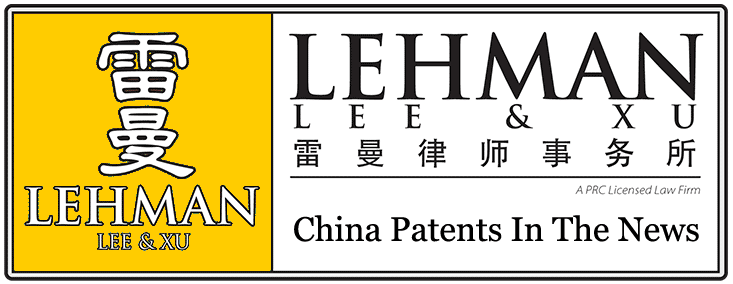In Tianjin Jiegao Architectural Materials LLC. and Tianjin Jiegao Kemao LLC, the Supreme People’s Court (“SPC”) addressed the application of the “innocent carrier” defense that the infringer should not be liable since it obtained the infringing products from another seller. The SPC also held that petitioner failed to show that the High Peoples’ Court erred in calculating the damages. Ultimately the SPC affirmed a judgment from the High People’s Court granting 2 million RMB award to the patentee.
Facts and Procedural History
The plaintiff Liu is the assignee of Chinese invention patent ZL 02234558.9 for automatic rolling window shades with adjustable self-locking rolling structure (自动卷帘纱窗可调自锁卷纱机构). Liu purchased three rolling window shades from Tianjin Jiegao Architectural Materials LLC. and Tianjin Jiegao Kemao LLC (together “TJK”). After a thorough analysis, Liu determined the alleged infringing product has each and every element claimed in the patent, except that some bolts are screwed to fix the screen at the other direction. Liu sued TJK for patent infringement at the First Intermediate Peoples’ Court of Tianjin. The First Intermediate Court found infringement and granted the injunction and monetary damages and legal fees including attorneys’ fees and filing fees. TJK appealed this decision to The Tianjin High Peoples’ Court. The question raised on appeal is mainly relating with the damages and the infringement was not an issue on appeal. The Tianjin High People’s Court remanded the damages awarded. The court awarded damages and attorney’s fees in total of 2 million Chinese Yuan and 22,800 for filing fees and court’s expenses, with approximately totals 270,000 US Dollars.
Issues on Appeal
There are two issues presented for the SPC’s review: (1) Whether TJK can establish an affirmative defense on their products was from a legitimate source; and (2) Whether the High Peoples’ Court awarded the proper damage.
TJK asserted the “innocent carrier” defense to prove that their infringing products are from another legitimate source. Under the Chinese patent law, whoever obtained the infringing product from a legitimate source in an arms-length transaction and without knowledge of the infringement is not liable for damages as long as he or she ceases selling the infringing product.
To prove its innocence, TJK produced contracts with its suppliers listing the composing parts of the infringing products. TJK’s witness also asserted that the infringing products TJK used and sold in the relevant projects were obtained from another seller. However, the contracts failed to specify the specific use and steps for manufacturing the window shades. Neither did the contract demonstrate the structure of the products. The witness testimony was not collaborated by any other evidence. As a result TJK were not able to prove that it was an “innocent carrier.”
On the second issue, the calculation of damages was based on the unjust profits gained by TJK by selling the infringing products. The main issue was the method of calculating damages based on sales documents. Because there was no uniform price structure for selling and installing the patented component inside windows, the trial court judge determined a single reasonable royalty rate of 40 RMB per window installed. The plaintiff’s request for unjust enrichment (profit of the infringer) damages was rejected.
Lessons for Litigants
The Innocent Carrier Defense: This case showcases the contour of the “innocent carrier” defense under Chinese patent law. The typical defendants asserting the innocent carrier defense are retailers or downstream manufacturers. In order to prove their innocence, the innocent buyer had to demonstrate that what they purchased was the infringing product. As a result of this case, it behooves businesses to maintain a record of their purchasing orders, catalogues, photos and webpage printouts in case they become an unwitting defendant. It should be noted that the petitioner submitted more evidence to prove their affirmative defense and the SPC accepted that piece of evidence on appeal.
Litigation Speed: This case also illustrates the possible speed of patent application and adjudication in China. The application for the patent at issue was filed at May 22, 2002 and issued at April 23, 2003. Chinese courts also seem like having a very quick reaction on their pending cases. The case was filed by Liu in 2007 (there was an evidentiary hearing held in Tianjin Second Peoples’ Intermediate Court on August 29, 2007). Case was appealed to the High Peoples’ Court and decided on February 20, 2009. The Supreme People’s Court took the case in May 2009 and decided the case at December 15, 2009. To be sure, the technology relates to a mechanical device for controlling windows but the fact that a case can proceed with such speed noteworthy.
Unjust Enrichment Damage: An unjust enrichment theory was noted in this case but not proven. Unjust enrichment remedy is available but it is often difficult if not impossible to prove unjust enrichment in China due to the lack of civil discovery process. The plaintiff who bears the burden of proving damages often lacks the ability to access defendants' accounting data necessary to show profit. However, it is worth keeping in mind that this theory of damage is available for the patentee.
Web link: http://chineseip.jmls.edu/sites/en/are-you-innocent-carrier-
|

